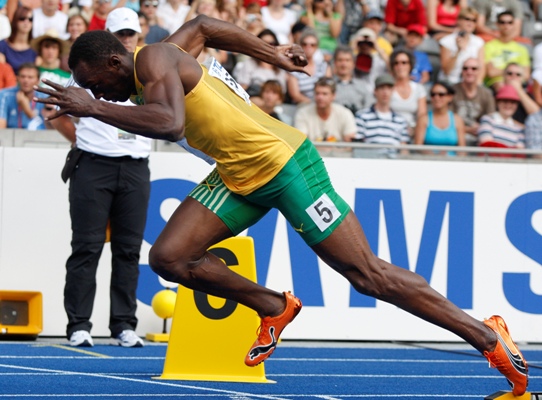In Caribbean news, as the world’s best athletes descend on London to take part in the Olympic Anniversary Games, a group of researchers from Mexico has provided an insight into the physics of one of the greatest athletic performances of all time.
In a new paper published on July 26, in IOP Publishing’s European Journal of Physics, the researchers have put forward a mathematical model that accurately depicts the truly extraordinary feats of Usain Bolt during his 100 metre world record sprint at the 2009 World Championships in Berlin.
According to the researchers’ model, Bolt’s time of 9.58 seconds-which is still the world record-was achieved by reaching a terminal velocity of 12.2 metres per second and exerting an average force of 815.8 newtons.
What was truly amazing about his performance, however, was the amount of power and energy that Bolt had to exert to overcome the effects of drag caused by air resistance, which were exacerbated by Bolt’s huge 6ft 5in frame.
By taking into account the altitude of the Berlin track, the temperature at the time of the race and the cross-section of Bolt himself, the researchers calculated that he had a drag coefficient of 1.2, which is less aerodynamic than the average human.
According to the calculations, Bolt developed 81.58 kJ of energy during the 9.58 seconds, but only 7.79% of this was used to achieve motion; the remaining 92.21% (75.22 kJ) was absorbed by the drag.
Furthermore, the researchers calculated that Bolt had a maximum power of 2619.5 watts after only 0.89 seconds of the race, when he was at half of his maximum speed, demonstrating the almost instant effect of the drag.
Co-author of the study, Jorge Hernandez, said: “Our calculated drag coefficient highlights the outstanding ability of Bolt. He has been able to break several records despite not being as aerodynamic as a human can be. The enormous amount of work that Bolt developed in 2009, and the amount that was absorbed by drag, is truly extraordinary.”
“If Bolt were to run on a planet with a much less dense atmosphere, he could achieve records of fantastic proportions,” he said.
Researchers claimed their equations can also be used to account for the effect of a tailwind, which can vary between races and significantly reduce running times.
To demonstrate the equations’ applicability, the researchers, from the National Autonomous University of Mexico, compared Bolt’s time in Berlin with his previous world-record time-9.69 seconds-set during the Beijing Olympics a year earlier.
In Beijing Bolt was running with no tailwind, but in Berlin there was a tailwind of 0.9 metres per second. According to the researchers’ new equations, Bolt would have clocked a slower time in Berlin if there was no tailwind, but would still have beaten his world record from Beijing-they predict that he would have run a time of 9.68 seconds.
The calculations in the study were tested for accuracy by fitting real-life experimental data into the equations. The data were from the International Association of Athletics Federation’s (IAAF) laser velocity guard device, which recorded Bolt’s position and speed every one-tenth of a second during the 2009 race in Berlin.





